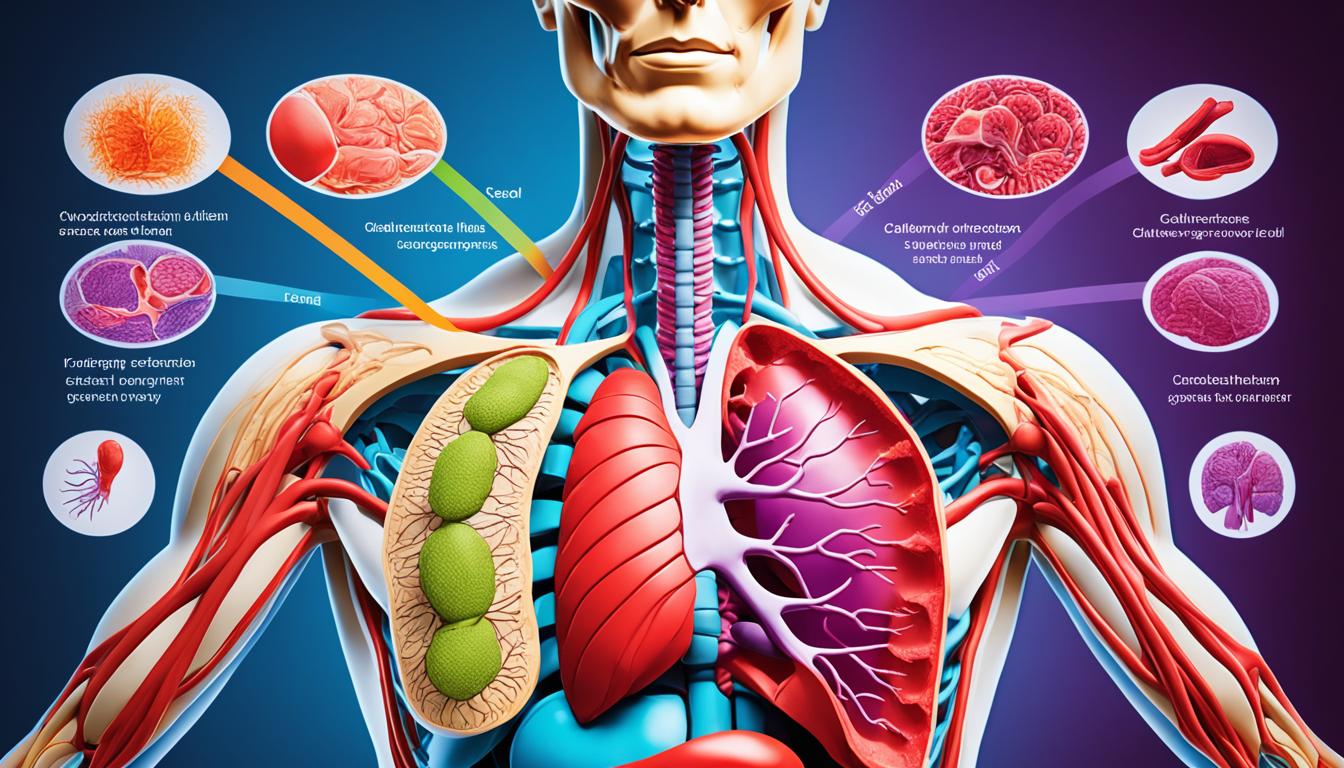Celiac axis syndrome is a rare health issue that affects the celiac artery. It leads to a lot of abdominal pain and other symptoms. This syndrome happens when the celiac artery is squeezed by a ligament called the median arcuate ligament.
The exact reason behind celiac axis syndrome is not fully known. But experts think it happens because the median arcuate ligament is in the wrong place. This wrong spot causes the celiac artery to be pressed. As a result, blood and oxygen can’t reach the belly organs well.
Doctors use imaging tests like angiography to diagnose celiac axis syndrome. These tests give detailed pictures of the celiac artery and nearby areas. They help doctors see the problem clearly and decide how bad it is.
Treating celiac axis syndrome may involve pain medicine, blocking nerve signals in the belly with a celiac plexus block, or surgery for serious cases. Stem cell therapy is also being studied for its possible role in treating this syndrome.
Key Takeaways:
- Celiac axis syndrome is a rare condition characterized by the compression of the celiac artery by the median arcuate ligament.
- Severe abdominal pain is a common symptom of celiac axis syndrome.
- Diagnosis of celiac axis syndrome typically involves imaging tests.
- Treatment options for celiac axis syndrome include medication, celiac plexus block, surgical intervention, and stem cell therapy.
- Stem cell therapy shows potential as a regenerative treatment for celiac axis syndrome.
Symptoms and Diagnosis of Celiac Axis Syndrome
The main symptom people with celiac axis syndrome feel is intense and lasting stomach pain. This pain gets worse after eating, making life hard. They might also lose weight and feel sick often.
Doctors use special tests to find out if someone has celiac axis syndrome. These tests show if a part of the belly artery is squished. Testing includes angiography and angiotomography.
Angiography is when dye is inserted into the belly artery, then X-rays take pictures. It helps doctors see if anything is wrong with the artery.
Angiotomography, or CT angiography, is a mix of a CT scan and angiography. It makes 3D images of the blood vessels. This gives doctors a detailed look at the belly artery.
With these tests, doctors can be sure if someone has celiac axis syndrome. They can see how bad it is and plan the right way to help.
Treatment Options for Celiac Axis Syndrome
Treating celiac axis syndrome depends on how bad it is and how much it affects life. Easy lifestyle changes might work for mild cases. These include eating less fat and skipping big meals. Doctors might also give pain relievers or muscle relaxants for the pain.
If a patient’s symptoms are severe and simple treatments don’t work, a celiac plexus block might help. This procedure stops some nerve signals in the belly to ease pain. Surgery could also be an option. Laparoscopic release of the median arcuate ligament can help by fixing a compressed artery.
Stem cell therapy is a new but hopeful way to treat celiac axis syndrome. It aims to heal damaged tissues and boost blood flow. This treatment might lower symptoms and make life better for these patients.

